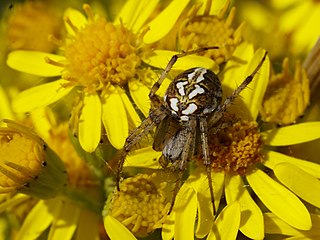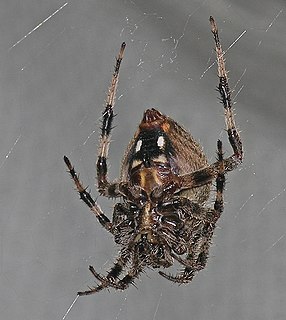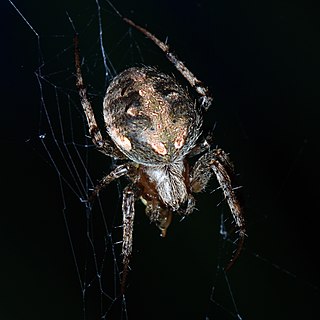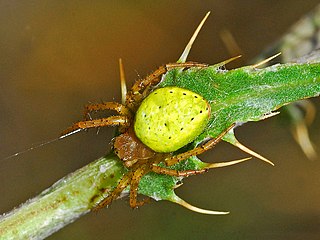
Spider-Man is a fictional superhero created by writer-editor Stan Lee and writer-artist Steve Ditko. He first appeared in the anthology comic book Amazing Fantasy #15 in the Silver Age of Comic Books. He appears in American comic books published by Marvel Comics, as well as in a number of movies, television shows, and video game adaptations set in the Marvel Universe. In the stories, Spider-Man is the alias of Peter Parker, an orphan raised by his Aunt May and Uncle Ben in New York City after his parents Richard and Mary Parker died in a plane crash. Lee and Ditko had the character deal with the struggles of adolescence and financial issues, and accompanied him with many supporting characters, such as J. Jonah Jameson, Harry Osborn, Max Modell, romantic interests Gwen Stacy and Mary Jane Watson, and foes such as Doctor Octopus, the Green Goblin and Venom. His origin story has him acquiring spider-related abilities after a bite from a radioactive spider; these include clinging to surfaces, superhuman strength and agility, and detecting danger with his "spider-sense." He then builds wrist-mounted "web-shooter" devices that shoot artificial spider-webbing of his own design.

Orb-weaver spiders are members of the spider family Araneidae. They are the most common group of builders of spiral wheel-shaped webs often found in gardens, fields and forest. "Orb" can in English mean "circular", hence the English name of the group. Araneids have eight similar eyes, hairy or spiny legs, and no stridulating organs.
Benoy Krishna Tikader (1928-1994) was an Indian arachnologist and zoologist and a leading expert on Indian spiders in his time. He worked in the Zoological Survey of India and published the Handbook of Indian Spiders in 1987. The book describes 40 families and 1066 species of India, many of which were described by Tikader himself. The handbook is a guide to all arachnids including scorpions, and not just spiders. He was also a popular scientific author in his native language of Bengali, and was the author of Banglar Makorsha for the layman.

Neoscona, known as spotted orb-weavers and barn spiders, is a genus of orb-weaver spiders (Araneidae) first described by Eugène Simon in 1895 to separate these from other araneids in the now obsolete genus Epeira. The name Neoscona was derived from the Greek νέω, meaning "spin", and σχοῐνος, meaning "reed" They have a mostly pantropical distribution and one species, Neoscona adianta, has a palearctic distribution. As of April 2019 there are eight species that can be found in the United States and Canada:

Spider fighting or spider derby is a blood sport involving spiders that occurs in different forms in several areas of the world. Among them are the Philippines, Japan, and Singapore. The fights that occur in the Philippines and in Japan are staged between females of various species of web weavers. Female spiders will kill a rival if the loser does not quickly flee or receive the aid of a human handler. The contests that are staged in Singapore are fights between male jumping spiders. The males fight only for dominance, and ordinarily the loser will flee, though sometimes they will lose a leg in the fight.

Neoscona punctigera is a widespread species of orb-weaver spider found from Japan to mainland Asia, Australia and several Western Indian Ocean islands.

A spider web, spiderweb, spider's web, or cobweb is a structure created by a spider out of proteinaceous spider silk extruded from its spinnerets, generally meant to catch its prey.

Spiders are air-breathing arthropods that have eight legs, chelicerae with fangs generally able to inject venom, and spinnerets that extrude silk. They are the largest order of arachnids and rank seventh in total species diversity among all orders of organisms. Spiders are found worldwide on every continent except for Antarctica, and have become established in nearly every habitat with the exceptions of air and sea colonization. As of July 2019, at least 48,200 spider species, and 120 families have been recorded by taxonomists. However, there has been dissension within the scientific community as to how all these families should be classified, as evidenced by the over 20 different classifications that have been proposed since 1900.

Neoscona crucifera is an orb-weaver spider in the family Araneidae. It is found in the United States from Maine to Florida in the east, to Minnesota in the Midwest, to Arizona in the southwest, and in Mexico. Its common names include Hentz orbweaver (after Nicholas Marcellus Hentz, spotted orbweaver, and barn spider. The name "barn spider" is also commonly used for a different spider, Araneus cavaticus.

Neoscona domiciliorum, commonly known as the spotted orbweaver or redfemured spotted orbweaver, is a spider in the family Araneidae. The specific epithet domiciliorum means "of dwellings" in Latin and refers to the fact that this species is often found living on buildings. Their bites are not known to cause serious harm in humans.

Neoscona arabesca is a common orb-weaver spider found throughout North America. Often called the arabesque orbweaver, after the cryptic, brightly colored, swirling markings on its prominent abdomen, this spider can be found in fields, forests, gardens, and on human structures. Neoscona species are among the most common and abundant orb weavers and are found on all continents. Females range in size from 5–7 mm (0.20–0.28 in) and males 5–6 mm (0.20–0.24 in).

Neoscona oaxacensis, known as western spotted orbweaver and zig-zag spider, is a species of spider in the family Araneidae. It is distributed in the Americas, from Kansas and California south to Venezuela and Peru, including the Galápagos Islands.

Eriovixia is a genus of orb-weaver spiders first described by Allan Frost Archer in 1951.

Neoscona theisi is a species of spider in the family Araneidae. Spiders in the genus Neoscona have a mostly pantropical distribution.
Neoscona utahana is a species of orb weaver in the spider family Araneidae. It is found in the United States and Mexico.

Neoscona nautica, the brown sailor spider, is a species of orb weaver in the family Araneidae. It is found in Asia and Pacific islands, has been introduced into both Americas, and Sudan.

Neoscona pratensis is a species of orb weaver in the spider family Araneidae. It is found in the United States and Canada.

Neoscona byzanthina is an orb-weaver spider.

Araniella opisthographa is a species of orb weaver in the spider family Araneidae.

















